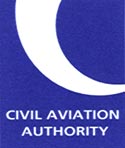 |
Halon-free Hand Fire Extinguishers |
Under UK environmental regulations, halon-based handheld fire extinguishers - specifically those containing Halon 1211 and Halon 2402 - must be replaced in aircraft cabins and crew compartments by 31 December 2025.
These requirements come from the Ozone-Depleting Substances Regulations 2015 and the Ozone-Depleting Substances (Qualifications) Regulations 2009, which aim to reduce the use of substances harmful to the ozone layer.
Responsibility for these regulations lies with:
- Defra (Department for Environment, Food & Rural Affairs) – which sets the legal deadlines.
- The Environment Agency and local authorities – which enforce the rules in England, with equivalent bodies in Scotland, Wales, and Northern Ireland.
The CAA have published Certification Memorandum (CM) UK-CM-CS-013 to provide guidance on the certification of the installation of Halon-free handheld fire extinguishers.
Design changes for the installation of Halon-free handheld extinguishers in compartments occupied by passengers or crew on CS-23, CS-25, CS-27 and CS-29 aircraft may be classified as Minor, provided that compliance with the guidance material contained within the CM Section 3.2 is demonstrated.
Application of the CM in Validation Projects:
- For new Validation Projects, where Minor Classification is appropriate, such Design Changes will be processed per the Implementation Procedures for Airworthiness (IPA) or Technical Implementation Procedures (TIP) as applicable.
- For Validation Projects currently in work with the CAA, where the principles of the CM guidance have been followed, delegation to the Certificating Authority (CA) may be considered. Otherwise, Validation by the UK CAA remains required. To further address this, a Temporary Amendment to the Safety Emphasis Items (SEI) List has been published.
Requirement to carry a fire extinguisher:
NCO.IDE.A.160 Hand fire extinguishers:
(a) Aeroplanes, except ELA1 aeroplanes, shall be equipped with at least one hand fire extinguisher:
(1) in the flight crew compartment; and
(2) in each passenger compartment that is separate from the flight crew compartment, except if the compartment is readily accessible to the flight crew.
(b) The type and quantity of extinguishing agent for the required fire extinguishers shall be suitable for the type of fire likely to occur in the compartment where the extinguisher is intended to be used and to minimise the hazard of toxic gas concentration in compartments occupied by persons.
ELA1 aircraft” means the following manned European Light Aircraft:
- an aeroplane with a Maximum Take-off Mass (MTOM) of 1200 kg or less that is not classified as “complex motor-powered aircraft”;
- a sailplane or powered sailplane of 1200 kg MTOM or less;
- a balloon with a maximum design lifting gas or hot air volume of not more than 3400 m3 for hot air balloons, 1050 m3 for gas balloons, 300 m3 for tethered gas balloons;
- an airship designed for not more than four occupants and a maximum design lifting gas or hot air volume of not more than 3400 m3 for hot air airships and 1000 m3 for gas airships;
ANO Schedule 5 Article 6 Hand Fire Extinguishers
6.—(1) Subject to sub-paragraph (2), flying machines must be equipped with at least one hand fire extinguisher—
(a) in the flight crew compartment; and
(b) in each passenger compartment that is separate from the flight crew compartment, except if the compartment is readily accessible to the flight crew.
(2) Sub-paragraph (1) does not apply to a flying machine with a maximum take-off mass of 1,200kg or less.
AOPA Update 28 November 2025:
At the recent General Aviation Partnership (GAP) meeting, AOPA rasied a number of questions in respect of the banning of HALON fire extinguishers from 31 December 2025.
In response,the UK CAA confirms that halon handheld fire extinguishers must be replaced under UK environmental law by 31 December 2025, but this requirement stems from environmental regulation, not airworthiness legislation. Therefore, non-compliance after 1 January 2026 would not, in itself, render an aircraft unairworthy or mandate grounding. Operational rules (NCO.IDE.A.160) can be met with non TSOed extinguishers if not specified in the AFM, while AFM mandated equipment changes must follow approved modification processes.
EASA has indicated that non TSOed extinguishers may be acceptable under NCO.IDE.A.160, provided they are suitable for the fire risks in each compartment and do not create toxic hazards. Where extinguishers are mandated in the AFM, EASA expects changes to follow CS STAN Standard Change CS SC108a, ensuring compliance with type certificate assumptions.
The CAA have agreed to look at what EASA may propose and to find a low cost solution.
Piper Service Letter 1355A includes:
“Starting December 31, 2025, some civil aviation authorities will be mandating the removal of all Halon fire extinguishers from use in aircraft under their jurisdiction. For aircraft that will be operating under this requirement, Piper Aircraft, Inc. recommends replacing any existing UL rated fire extinguisher with a Halotron BrX clean agent fire extinguisher of the same UL fire classification rating (2B:C, 5B:C, etc.) as the existing fire extinguisher. Piper recommends owners/operators contact their local civil aviation authority for installation guidance and approval. For EASA certification, Piper recommends owners/operators utilize EASA Certification Memorandum CM-CS-013 for installation authorization.”
UK CAA Update 28 November 2025:
General Aviation pilots and aircraft owners are reminded that halon-based handheld fire extinguishers must be removed from aircraft cabins and crew compartments by 31 December 2025, in line with UK environmental regulations.
The CAA is not responsible for enforcing these rules or issuing exemptions.
Guidance on replacement options and regulatory responsibilities is available on our website.

